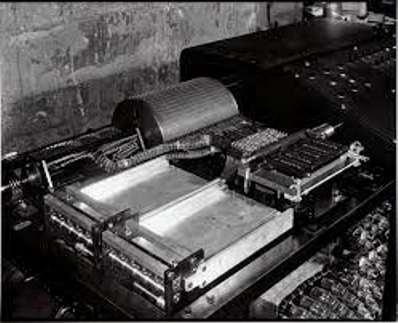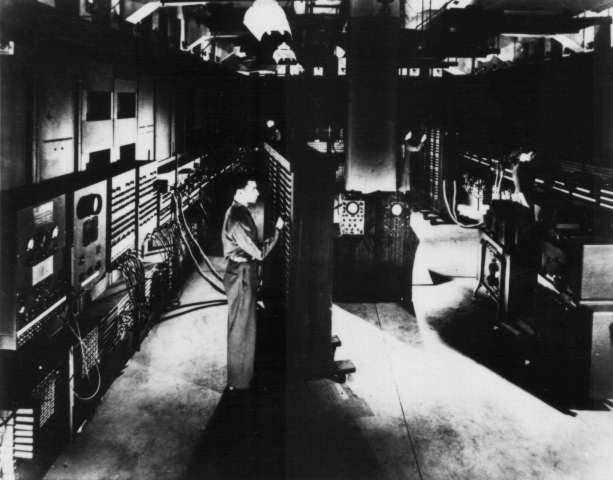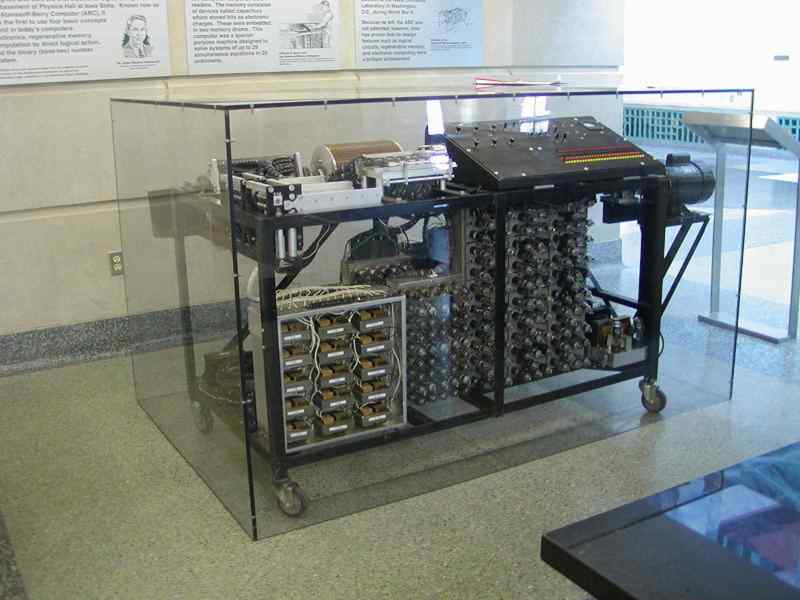| 14 June 1941 - Date of a Significant Meeting |
| Written by Sue Gee |
| Monday, 14 June 2021 |
|
The history of computing, both hardware and software, is punctuated by patent wrangles. One of the most bitterly contested hinged on a meeting that took place eighty years ago, on June 14, 1941 when John Mauchly, went to Iowa City to see John Atanasoff and his ABC computer.
The ABC The two men later presented contrasting accounts of the visit. Atanasoff claimed that Mauchly "expressed joy" at seeing parts of the ABC work out some simple arithmetic. Mauchly stated, "I found that although he used valves and did do it relatively cheaply, he lost most of the advantage because he wasn't doing it fast." The difference in viewpoint over the visit is striking. Atanasoff said Mauchly was fascinated. Mauchly said it was a waste of time. Whatever the truth, it is likely that both Atanasoff and Mauchly had good cause to regret the short visit for many years as it became a key issue in which of them was credited as the inventor of the computer. To skip to the end of the story, although ENIAC - the first computer built by Mauchly and J Presper Eckert had been regarded as the first modern computer for decades in 1973 it was ruled that, as result of this visit, ENIAC was derived from the ABC and therefore that Atanasoff was the inventor of the digital computer. The Atanasoff-Berry Computer, or ABC, was built by physics Professor John Vincent Atanasoff and his graduate student, Clifford Berry, in 1942 at Iowa State College, now known as Iowa State University. The machine, which weighed over 700 pounds, used vacuum tubes and had a rotating drum, a little bigger than a paint can, that had small capacitors on it. Its design included with several breakthrough ideas, in particular using binary digits, just ones and zeroes, to represent all numbers and data. Another was the separation of the program (the computer instructions) and memory (places to store numbers). The ABC was designed to solve equations with up to 29 different variables but lacked a way to change its program - which could only perform a single task at a time. This meant that, to reach solutions, an operator had to write down intermediate answers and feed them back into the ABC for the next step. Atanasoff left Iowa State before he perfected a storage method that would have eliminated such operator intervention. Shortly after Atanasoff's departure the ABC was dismantled and Atanasoff never filed a patent for his invention. ENIAC ENIAC, short for Electronic Numerical Integrator and Computer Work, was designed and built at the Moore School of Electrical Engineering, University of Pennsylvania by John Mauchly and J. Presper Eckert. Work on the project was started in 1943 and it became operational in 1946. It was huge. It used just short of 18000 vacuum tubes arranged in racks 100 feet long in total and consumed enough electricity, about 150kW, for a small town. But it worked. It could add two numbers in 0.2 milliseconds and this speed increase made calculations possible would have simply taken too long by other methods available at the time. A patent for ENIAC was filed in 1947 but by then Eckert and Mauchly had left the Moore School as a result of their refusal to sign a release giving the University of Pennsylvania the rights to the technology that they had created. Moving on they formed the first computer company - The Electronic Control Company - which in 1951 was sold to Remington Rand which in turn become Sperry Rand, the company which started demanding royalty payments from other computer manufacturers in the late 1960's. A dispute over patent royalties eventually resulted in a lawsuit filed on May 26, 1967 by Honeywell Inc. against Sperry Rand challenging the validity of the ENIAC patent. The trial, one of the longest and most expensive experienced in the federal courts of the time, began on June 1, 1971 and lasted until March 13, 1972. It had testimony from 77 witnesses, plus 80 depositions and 30,000 exhibits and Atanasoff's ABC machine was introduced as "prior art". The case was legally resolved in October, 1973, when U.S. District Judge Earl R. Larson held the patent invalid, ruling that the ENIAC derived many basic ideas from the Atanasoff-Berry Computer. Judge Larson explicitly stated: "Eckert and Mauchly did not themselves first invent the automatic electronic digital computer, but instead derived that subject matter from one Dr. John Vincent Atanasoff". As part of the attempt to uphold the ENIAC patent the argument was made that the ABC never really worked. By that time the only remaining fragments were the drum memory units so the case was hard to prove. But in 1997 a team of faculty, researchers and students at Iowa State University completed work on a replica of the ABC, demonstrating that it did function. The replica is now part of the collection of the Computer History Museum in Mountain View, California.
The working ABC replica
Related ArticlesABC - Atanasoff-Berry Computer
To be informed about new articles on I Programmer, sign up for our weekly newsletter, subscribe to the RSS feed and follow us on Twitter, Facebook or Linkedin.
Comments
or email your comment to: comments@i-programmer.info
<ASIN:0425176444> <ASIN:1862078394> <ASIN:026201310X> <ASIN:0393047857>
|
| Last Updated ( Monday, 14 June 2021 ) |




